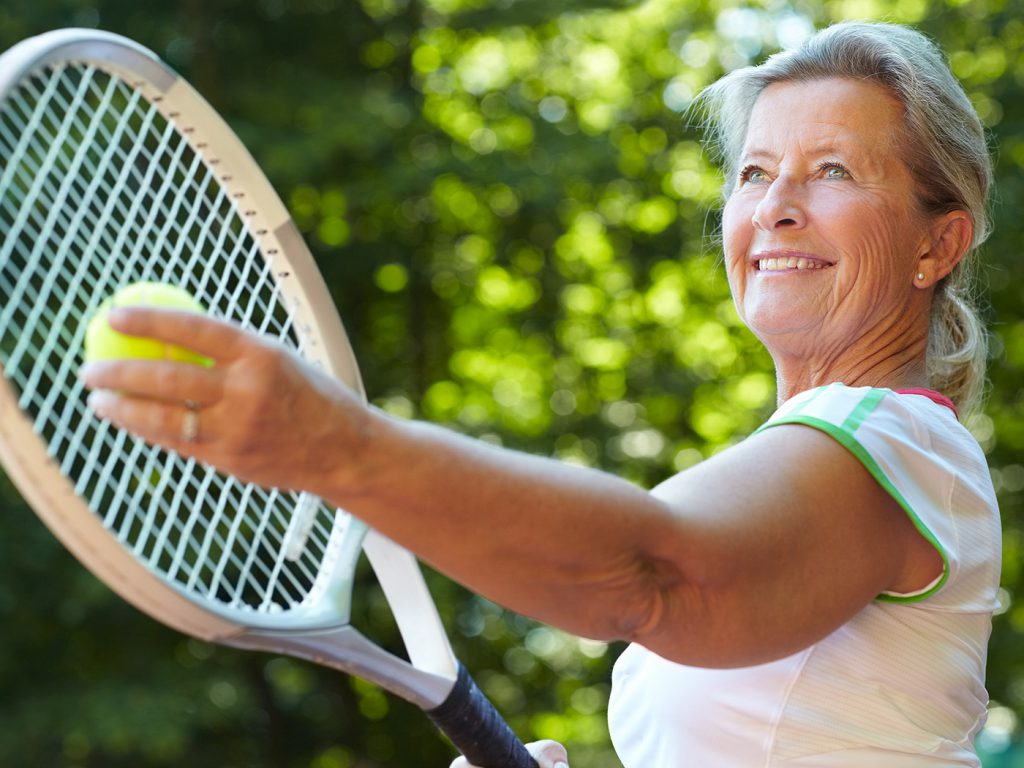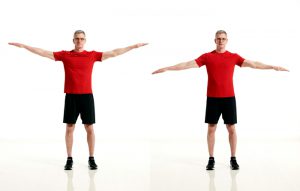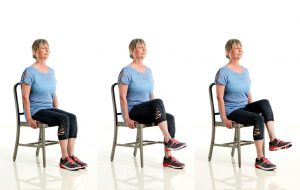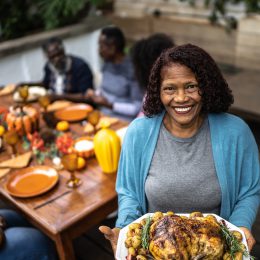5 Essential Fitness Rules for Older Adults
Follow these guidelines, and your fittest years will be yet to come.

No matter your age, exercising is one of the best things you can do for your body. But the best way to exercise? That depends, at least in part, on the number of candles on your birthday cake. And the more you plan to blow out this year, the more important it is to follow these five secrets to a healthier, fitter you.
Rule #1: The Warm-Up Is Nonnegotiable
Before you start your actual workout, it’s important to warm up your body, says Chris Freytag, a certified personal trainer and founder of Get Healthy U TV. Warm-up exercises—which literally warm your muscles and increase levels of key enzymes to improve your fitness performance—are important in all stages in life. But they are especially critical the older you get to help prevent joint and muscle injury, says Freytag.
How should you warm up? According to Freytag, the best warm-up prepares your body for whatever movements are to come. So treat your warm-up as a dress rehearsal. If you plan to do a stair-climbing workout, step-ups, or weighted lunges, a few sets of gentle bodyweight lunges (start shallow and then slowly increase depth) can help activate the muscles and mobilize the joints you need to power your workout. Going to build that upper body? Try some arm circles and bodyweight shoulder presses. Playing golf or tennis? Torso rotations can prime you for twisting and turning. Give yourself at least five minutes to warm up before jumping into your workout.

Rule #2: You Absolutely Must Move Some Weight
Strength training—whether it’s with dumbbells, resistance bands, or just your bodyweight—is perhaps the single best thing you can do to stay fit as you age. That’s because strengthening and building lean muscle mass helps combat age-related decline in muscle mass, called sarcopenia, says Cindy Anderson, a certified personal trainer and fitness director at Professional Fitness Center in Copiague, New York.
According to one review published in Age and Ageing, one out of every three adults ages 60 and older suffers from severe muscle loss. This can contribute to fat gain, low mobility and function, and even death in older adults.
But muscle strength aside, resistance-based exercises are also great at increasing bone density and strength, which helps prevent osteoporosis and fractures, Anderson explains.
New to strength training? Check out this beginner’s guide plus tips on how to choose the right weight.
Rule #3: You Need More Endurance Than You Think
If you want to be able to play tag with your grandkids without getting winded or needing to take a break, adding cardiovascular exercise to your fitness routine is vital.
“One of the best forms of cardiovascular exercise for older adults is walking,” Anderson says. Not only does it get your heart rate up and help cut your risk of cardiovascular disease, but it does so in an incredibly functional way—training your body in a way that closely mimics your daily activities.
If you’re new to walking workouts, Anderson recommends starting with five to 10 minutes of light walking three to four times per week. Gradually work up to 20 to 30 minutes of brisk walking five times per week.
If you’ve already got a walking routine, take it up a notch and beat boredom with these tips.
Rule #4: Better Balance Helps Keep You Out of the ER
The unfortunate reality is that your risk of falling—and hip fractures or head injuries that result—increases as you age. About 3 million older adults visit the emergency room (ER) each year because of falls, according to the Centers for Disease Control and Prevention. And more than 800,000 are hospitalized because of an injury from a fall.
Good news: Strength training and weight-bearing cardio workouts (like walking!) help lower your risk of taking a tumble. You can protect yourself even more by working on your balance.
“A good balance exercise to start with is the single-leg stand,” says Anderson. It strengthens your base of support and fine-tunes the ability of your proprioceptive nerve fibers to determine your body’s positioning in space, which is key for improving your balance and coordination.
Subscribe to our newsletter
It's quick and easy. You could be one of the 13 million people who are eligible.
Already a member? Click to discover our 15,000+ participating locations.
Follow Us
To perform a single-leg stand, hold a rail or heavy piece of furniture for support. Lift one leg just above the floor to stand on one leg. Try to hold that position for 30 seconds, using your arms for balance as little as possible without letting go, then switch legs. Perform three times on each leg once per day.
If that’s too difficult, try a seated knee raise. Closing your eyes while you do the exercise helps improve concentration and balance.

Rule #5: Low Impact Doesn’t Have to Mean Low Intensity
For older adults who have osteoporosis or joint pain, high-impact exercises such as jumping and running are often contraindicated or not recommended. However, that doesn’t mean you can’t—or shouldn’t—break a real sweat during your workouts. “Some people think that just because they shouldn’t perform high-impact exercises, that they shouldn’t perform high-intensity activities,” Freytag says. “That’s simply not true.”
After all, not only can high-intensity exercise be safe, it can be hugely helpful in keeping you healthy through the years. For example, a 2017 study published in Cell Metabolism found that high-intensity interval training, such as sprints on the treadmill or stationary bike, is the best exercise for fighting some forms of aging at the cellular level.
That said, your heart health is a huge factor in whether high-intensity exercise is right for you. Talk to your doctor to get the go-ahead.
Even if you’re not ready to go from 0 to 60, you can still pick up the intensity by adding bursts of harder or faster exercise to your usual workout. So, if you usually walk, you can mix in periods of faster walking or jogging. Or on the recumbent bike, you can mix in periods of faster pedaling.





